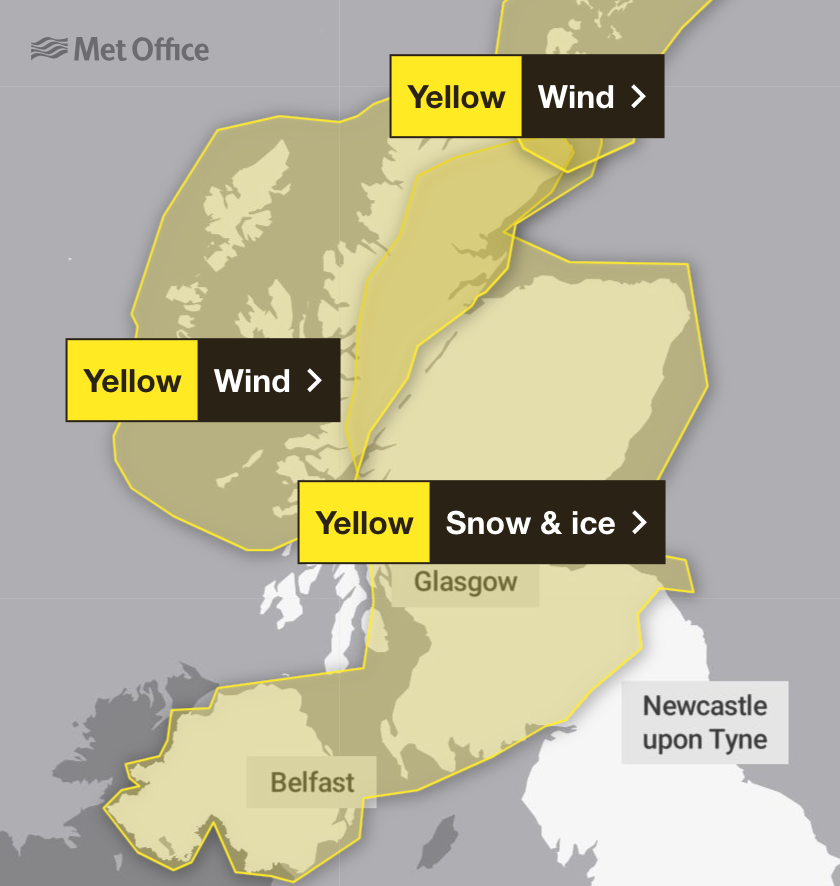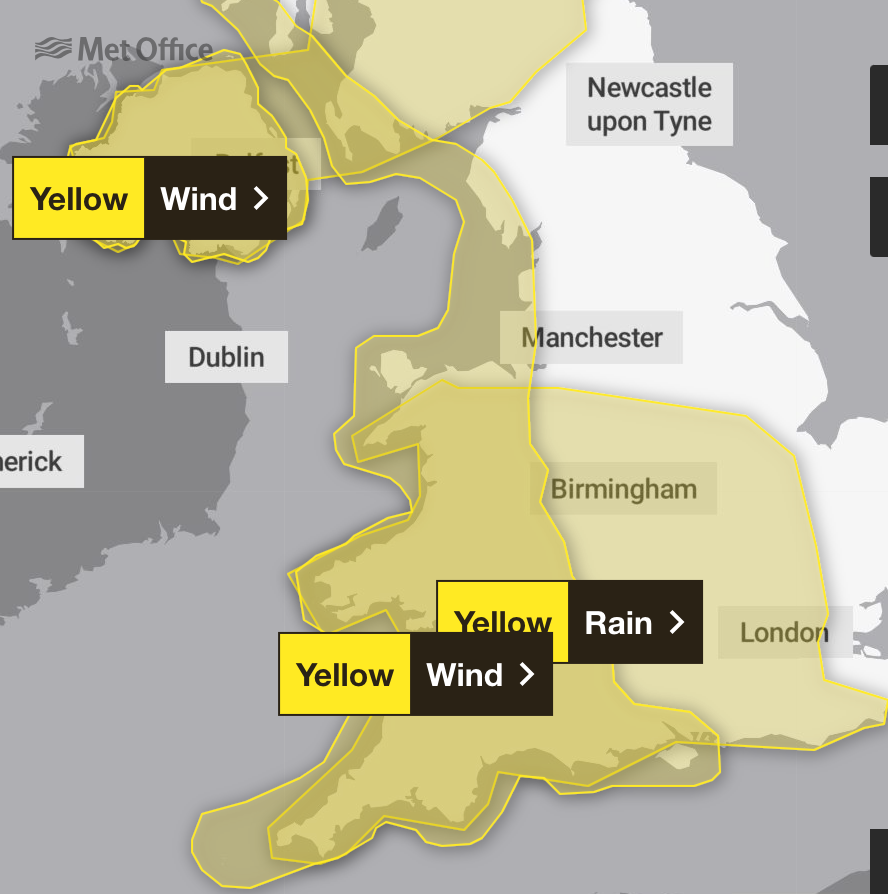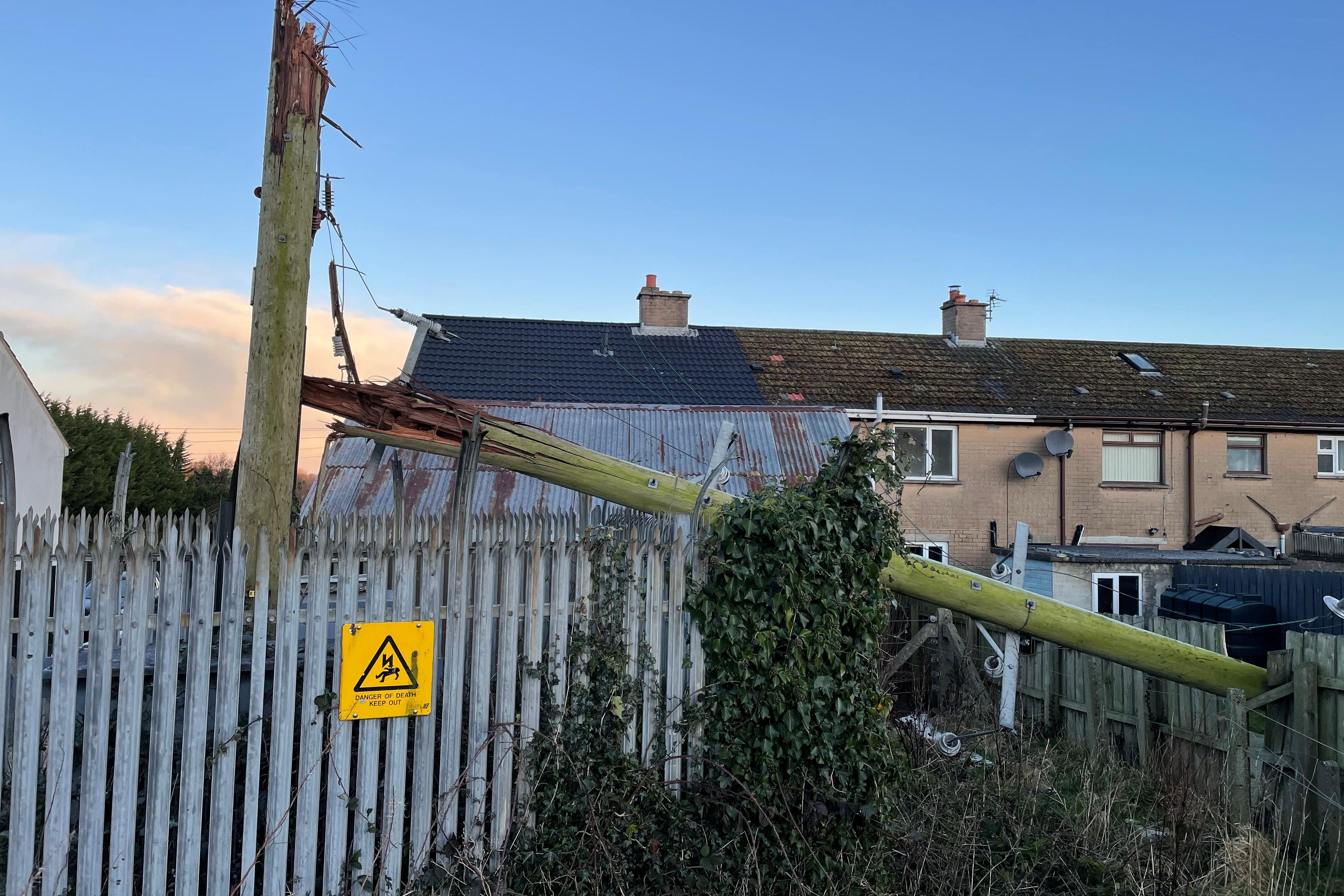Your support helps us to tell the story
From reproductive rights to climate change to Big Tech, The Independent is on the ground when the story is developing. Whether it’s investigating the financials of Elon Musk’s pro-Trump PAC or producing our latest documentary, ‘The A Word’, which shines a light on the American women fighting for reproductive rights, we know how important it is to parse out the facts from the messaging.
At such a critical moment in US history, we need reporters on the ground. Your donation allows us to keep sending journalists to speak to both sides of the story.
The Independent is trusted by Americans across the entire political spectrum. And unlike many other quality news outlets, we choose not to lock Americans out of our reporting and analysis with paywalls. We believe quality journalism should be available to everyone, paid for by those who can afford it.
Your support makes all the difference.
The Met Office has extended its weather warnings into Tuesday, forecasting more snow, ice and powerful winds as parts of the UK reel from the damage left by Storm Eowyn.
Described by forecasters as probably the most powerful storm to hit the UK in at least a decade, Eowyn battered the country with hurricane-force winds of up to 100mph which tore roofs from buildings, uprooted trees, overturned cars, and left 1 million people without power on Friday.
Major travel disruption continued on Saturday as trees, trampolines and even the roofs of buildings were cleared from railway tracks, with power distributors warning in Northern Ireland that it could take up to 10 days to restore electricity to all of the 185,000 homes still suffering outages.
The storm was “probably the strongest” to hit the UK in at least 10 years, the Met Office said, and was the most intense storm for “more like 20 or 30 years” in the worst-affected areas.

An emergency Cobra meeting was held over Storm Eowyn with the government declaring it will “stand ready to provide further support”, a government spokesperson said.
“Ministers discussed the ongoing response to Storm Eowyn, particularly the urgent work under way to reconnect homes which have lost power,” the spokesperson added following the meeting chaired by chancellor of the duchy of Lancaster Pat McFadden.
Scotland’s first minister John Swinney appealed for the public to remain patient as clear-up efforts continued on Saturday, as the Met Office issued a flurry of new weather warnings both in Scotland and further south, the last of which will be in force until Tuesday morning.
With a new low-pressure system set to take hold over the weekend, moving in from the southwest as Storm Eowyn passes, fresh warnings for snow and ice will come into effect at 6pm on Saturday, covering much of Scotland and also Northern Ireland, lasting until 10am on Sunday.
A warning for life-threatening winds was in force in Orkney and much of Shetland until 3pm, while a less severe wind alert in the Highlands and Hebrides will now also take effect at 6pm and will remain in place for 12 hours.

The harsh conditions will begin to bite further south on Sunday, with the Met Office issuing a yellow rain warning covering southern and central England and Wales from 8am on Sunday to 6am on Monday.
Some places could see up to 80mm of rainfall over that period during two separate spells of heavy rain and thundery showers, forecasters said, with the Environment Agency issuing 30 flood alerts across southern England, with one more severe flood warning in Salisbury Plain.
The Met Office warned of the small risk that fast flowing or deep floodwater could pose a danger to life, and of the potential for power cuts and difficult driving conditions.

By Monday, all weather warnings will be concentrated in England and Wales. Gusts of up to 70mph are expected along the south coast, with winds reaching 50mph further inland until the warning lifts at 6am on Tuesday.
It comes after more than 1,000 flights were cancelled on Friday, with Dublin, Edinburgh, Heathrow and Glasgow airports the worst affected.
Rail services continued to face major disruption on Saturday, with Scotland repeatedly cut off from England due to debris and damage to overhead wires.
Network Rail Scotland said on Saturday morning that it had discovered nearly 400 “incidents of damage”, including more than 120 reports of fallen trees.
One such incident included the section of roof from a nearby building spotted by helicopters obscuring the entrance to a tunnel at Glasgow Queen Street station, which was blocking some services there.
In Ireland, the young man killed on Friday in County Donegal when a tree fell on his car was named as 20-year-old Kacper Dudek.
Warning that 185,000 properties remained without power in Northern Ireland on Saturday, NIE Networks managing director Derek Hynes said there were believed to be more than 4,000 locations where the network had been damaged by high winds and fallen trees.
Lamenting the “devastating levels of damage to the electricity network in Northern Ireland”, Mr Hynes said: “Almost one-third of the people here have no power.
“Right now, we are prioritising faults which affect the largest numbers of homes and businesses. It is likely that it will take us up to 10 days to get to the final locations and restore power to those residents.”

Eowyn became a bomb cyclone, which happens when a storm’s pressure drops 24 millibars in 24 hours and then strengthens rapidly.
The storm was so powerful that meteorologists say a “sting jet” developed, meaning a narrow area of winds moving 100 mph or faster is drawn down to the Earth’s surface from higher up in the atmosphere than is typical.
The phenomenon can make dangerous storms even more intense, resulting in more damage. The most famous example of this was the Great Storm of 1987 when hurricane-force winds across the UK caused widespread damage and killed 18 people.
Scientists say that pinpointing the exact influence of climate change on a storm is challenging, but that all storms are happening in an atmosphere that is warming abnormally fast due to human activity.
“As the climate gets warmer, we can expect these storms to become even more intense, with greater damages,” said Hayley Fowler, a professor of climate change impacts at Newcastle University.
